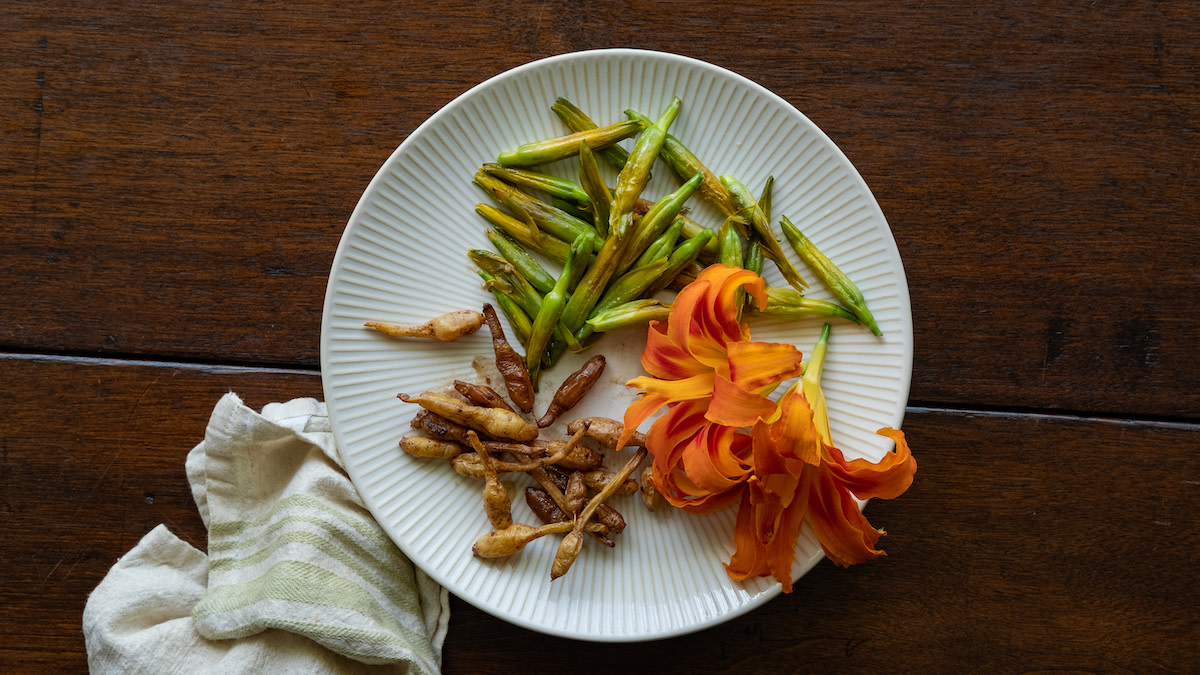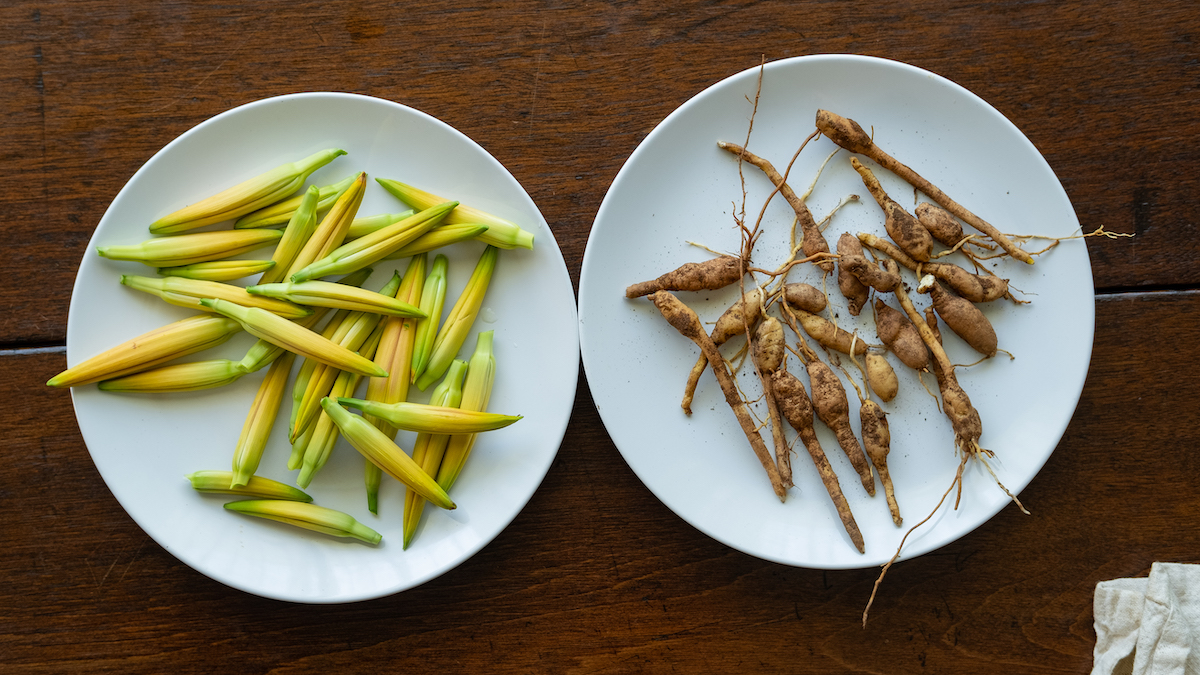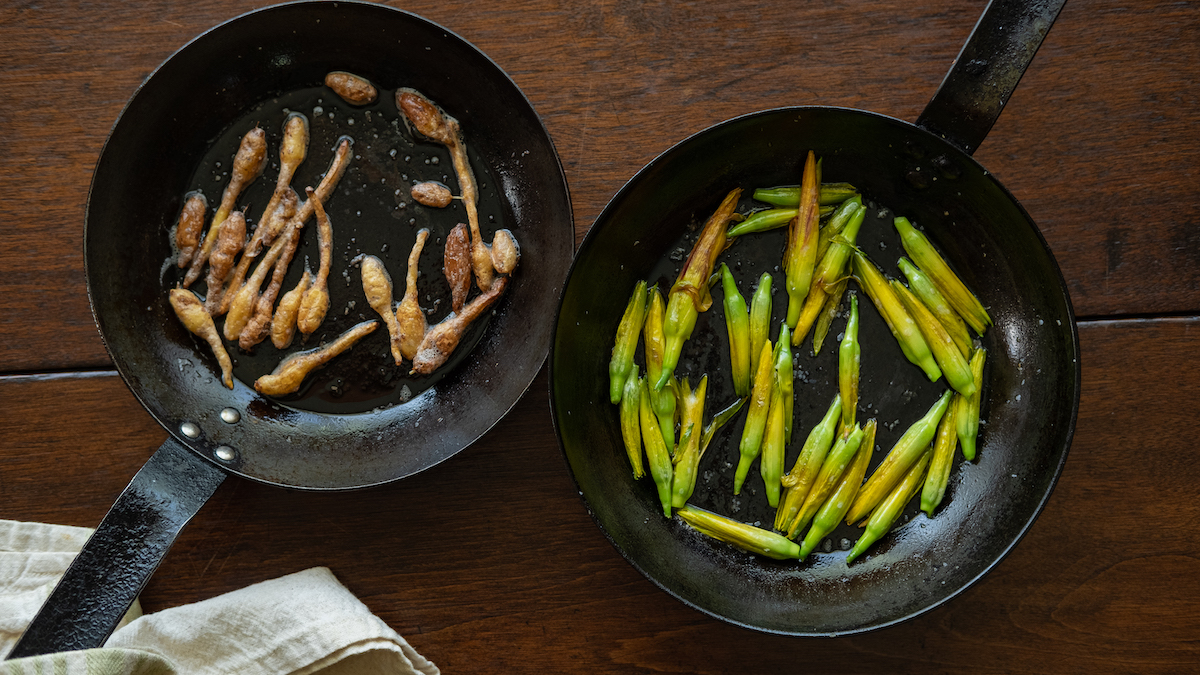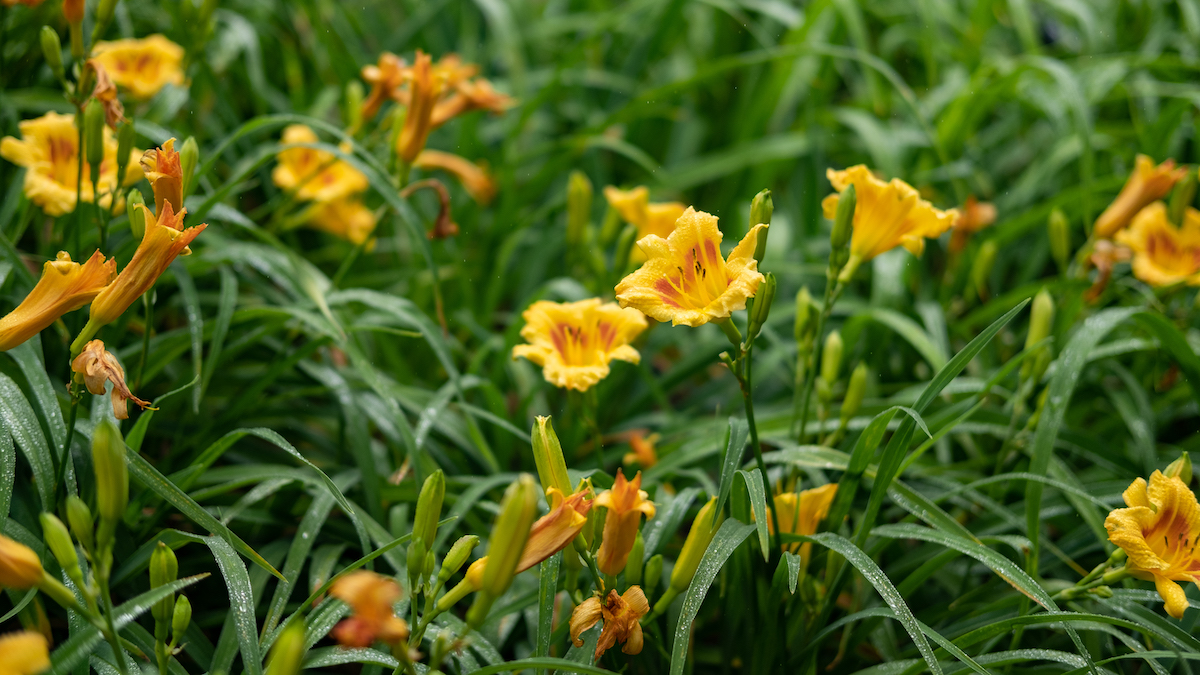
Daylilies (genus Hemerocallis) are a common flowering perennial in most of the lower 48. Native to Asia, these hardy plants that are commonly called ditch lilies can be found growing along roads, old house sites, lawns, and just about anywhere else. I love growing these plants for a few reasons—they require almost no maintenance, put up pretty blooms all summer, and they’re very tasty.
Almost the entire plant is edible year-round. You can eat the young shoots in the spring, the flowers, the flower buds, and the tubers. My favorite parts are the flower buds, the flowers, and the tubers. The young shoots are fine, but I’d rather leave them alone for the stuff that comes later in the season.

Flower Buds
The buds are one of the best parts of the plant. They taste like a cross between artichoke hearts and green beans. They have a little soft crunch to them and a bright, green flavor. They’re absolutely delicious, and not in a “pretty good for foraged food way,” more like in a “damn good compared to anything” way.
You can batter and fry, roast, grill, steam, or saute them. Basically, any way you would cook a green bean, you can do the same to a daylily bud. I prefer them lightly seasoned and sauteed with butter. Add a little lemon juice if you want, or some herbs, but they honestly don’t need much. I also like to pickle some of the buds with some chili and dill—they make a great addition to any salad, charcuterie board, or just eaten out of the jar.

Tubers
If you dig up a clump of daylilies, you'll find a tightly wound fibrous ball of roots and tubers. The tubers look like tiny potatoes, and they taste like a cross between potatoes and sunchokes. They have a starchy texture like a Yukon gold potato, with a bit of sweetness and a slightly floral note. Again, these are honestly delicious. It’s not survival food, it's top shelf.
To harvest, I dig up a plant and pluck a few of the largest tubers off of each clump, and then replant the lily. I mentioned earlier that these plants are hardy—they always seem to come back, and if you want to proliferate them even more, divide up the roots and tubers and spread them out. They’ll take over your space in just a few seasons.
I cook daylily tubers the same way I cook small potatoes, lightly blanched then sauteed with butter or any fat of your choice. I scrub the roots before cooking with a brush to remove any dirt and leave the skin on them. You can roast them in the oven, fry them, and if you had a pile you could boil and mash them. Treat them like you would any small potato, you can’t go wrong.

The Flowers
I generally think eating flowers is lame. Most of the time, edible flowers aren’t very tasty. They make a great garnish but usually range from kinda bland, to kind of bitter. Daylily flowers are an exception to my generalization. The entire plant has an undertone of artichoke, the flowers included.
They have a semi-crisp texture similar to bibb or mache lettuce. They have hints of artichoke, and a subtle floral note. I like to add them to salads raw, but they are also great stuffed and fried like squash blossoms, or dehydrated and added to soups. As far as edible flowers go, these are hard to beat in both taste and appearance.
Final Notes
While daylilies may seem like the perfect perennial, they are non-native and in some places are considered noxious weeds. So be mindful if you are going to propagate them. Also, while all members of the genus Hemerocallis are edible, there is a chance they might upset your stomach, so it’s recommended you eat a small amount the first time around. And on a final note, daylilies are not to be confused with the actual lilies (which grow from bulbs) some of which are toxic and could make you seriously ill or dead.






Conversation